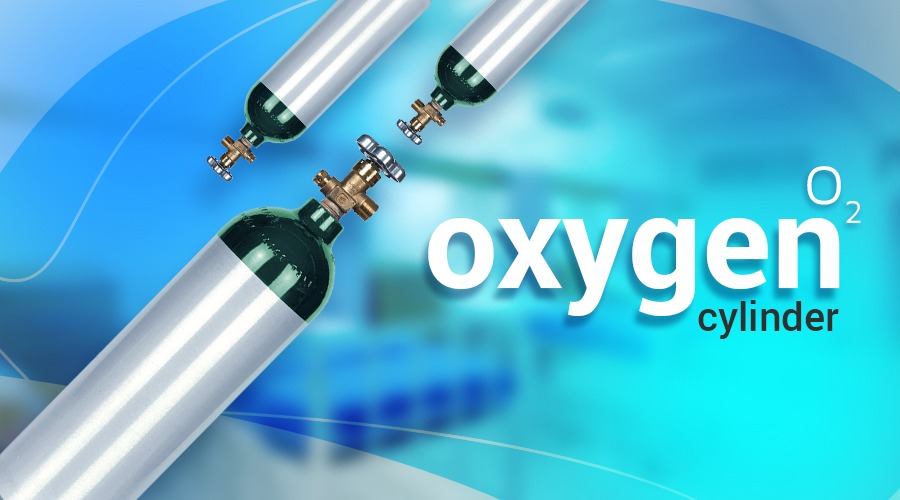Oxygen Cylinder: Everything You Should Know




Oxygen is one of the many things that differentiate the earth from the rest of the planets and support life. Oxygen is important, it’s understood. But why oxygen cylinder has become so important today? What is medical oxygen? What health conditions does it battle? How is it used to help patients in a healthcare facility and home to recover? How to get an Aluminium oxygen cylinder for your home or healthcare facility?
Sehaaonline has the answers you are looking for. Continue reading.
Importance in the recent time
The World Health Organisation includes medical oxygen on their List of Essential Medicines. The oxygen comes under the purview of drug control authorities and regulations of the various states. The Covid-19 pandemic, particularly, the second wave devastated the healthcare infrastructure of countries across the world. Many nations are battling oxygen shortages. Hospitals are running out of medical oxygen, denying admission to new patients, and patients are succumbing to it – inside and outside. This has built up an unexpected environment of fear and anxiety.
#1. What is medical oxygen?
Medical oxygen is also known as liquid medical oxygen (LMO). It is high purity oxygen suitable for use in the human body. So, it is used for medical treatments. The purpose of converting it into liquid is to save space to make transportation easier and economical. When oxygen comes out of the tank it gets converted into gas. What makes the transition is simple physics that doesn’t need any explanation.
Medical oxygen is a prescription medicine for many health conditions. In recent times, it has become the most essential for the treatment of Covid-19.
It is s used in the treatment of various types of health conditions where the patients find it difficult to consume the atmospheric oxygen. Blood oxygen level drops significantly in some conditions like severe Covid-19. The oxygen cylinder helps in facilitating the medical oxygen to keep it at the normal level, which is important for the functioning of the organs in any living being.
This oxygen provides a basis for virtually all modern anesthetic techniques, restores tissue oxygen tension by increasing oxygen availability, aids cardiovascular stability, etc.
#2. What has caused the crisis?
Inadequate infrastructure and technology
We have oxygen in the air. About 21% of the air is oxygen, but we have to take it out or concentrate it into medical oxygen and that requires technology-driven infrastructure that is efficient, safe, and economical. So, that's one issue in some countries.
Distance of production plants
Distribution is the next big challenge. There is a long-distance between hospitals and LMO plants. It creates long transportation hauls. The turnaround time (from production plant to hospital) can be sometimes as long as 6 to 7 days in many areas due.
Transportation constraints
The availability of limited tankers adds to the woes of a healthcare facility. The transportation of LMO demands special tankers called cryogenic tankers. These tankers are double-skin vacuum-insulated containers, including an inner vessel made of stainless steel. They can maintain the temperature at -180 degrees C, which is ideal for carrying liquid oxygen. There is a huge shortage of such tankers and they are highly expensive. Travel restrictions, leakage, and black marketing are other prominent causes that have attributed to the crisis.
#3. What health conditions does it battle?
Home oxygen therapy can help with many conditions, including:
1. Covid-19
2. Asthma
3. Chronic bronchitis
4. Congestive heart failure
5. COPD (chronic obstructive pulmonary disease)
6. Cystic fibrosis
7. Emphysema
8. Lung cancer
9. Pneumonia
10. Pulmonary fibrosis
11. Sleep apnea
#4. How medical oxygen is used to help patients in a healthcare facility or home to recover?
The oxygen is supplied to the patient in the following manner:
Nasal cannula: This is a soft plastic tube with two small prongs at one end. They pass the oxygen into each of the nasal openings. The tube rests over the ears to hold it in place. The other end connects to the oxygen cylinder or supply. The nasal cannula delivers steady oxygen. It can dry your nose out a little.
Face mask: This fits snugly over the mouth and nose. The mask can make it hard to talk. The patient has to remove it while eating or drinking. This is recommended when high levels of oxygen are required.
Transtracheal catheter: For this mode of oxygen supply, surgery is made in the neck to insert a small plastic tube called a catheter. It goes above Adam’s apple and into your windpipe. A necklace holds the tube in place. The other end connects with the oxygen supply machine.
#5. What are important safety measures to use medical oxygen?
Oxygen supports combustion. Any fire spark can lead to an accident. Always follow these safety tips around oxygen:
1. Don’t smoke near oxygen cylinders. Keep away from open flames, such as matches, cigarette lighters, and burning tobacco.
2. Stay 5 feet away from heat sources. That includes gas stoves, candles, lighted fireplaces, and electric or gas heaters.
3. Don’t use flammable products like cleaning fluid, paint thinner, and aerosol sprays.
4. Keep oxygen containers upright. Attach them to a fixed object so they don’t topple.
5. Skip products with oil, grease, or petroleum. That also goes for petroleum-based creams and ointments like Vaseline on your face or upper chest.
6. Have a fire extinguisher in the room
7. Keep your electrical wiring and outlets in good condition to avoid any unnecessary spark during power fluctuation or surge.
#6. How to get an oxygen cylinder in UAE?
You can order oxygen cylinders online in UAE. We have medical oxygen cylinders in different sizes to meet your requirements. We make sure that the medical oxygen cylinder reaches you in the next 24 hours if ordered from Dubai and in 24-48 hours if ordered from Abu Dhabi, Ajman, Sharjah, Al Ain, Ras Al Khaimah.You can also order oxygen concentrator online.











